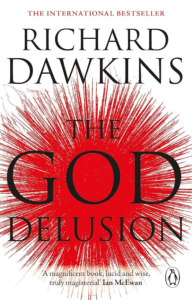The Enduring Scars and Fragile Bonds in “A Little Life”

Hanya Yanagihara’s “A Little Life” is not simply a novel; it’s an immersive and often harrowing journey into the life of Jude St. Francis, a man defined by the long shadow of childhood trauma. Through meticulous detail and unwavering focus, Yanagihara crafts a narrative that explores the enduring impact of abuse, the complexities of friendship, and the elusive nature of healing and happiness. While the novel has garnered both fervent praise and sharp criticism for its unflinching depiction of suffering, its power lies in its unflinching gaze at the depths of human vulnerability and the enduring capacity for love and loyalty in the face of unimaginable pain.
The Anatomy of Trauma: Unveiling Jude’s Past
At its core, “A Little Life” is a character study of Jude. We encounter him as a young, brilliant, but deeply scarred man navigating his early adulthood in New York City alongside his close friends: the aspiring actor Willem, the ambitious artist JB, and the talented architect Malcolm. As the years unfold, Yanagihara gradually unveils the horrific abuse Jude endured as a child, revealing the roots of his physical and emotional pain. The novel’s structure, which slowly peels back the layers of Jude’s past, mirrors the painstaking process of confronting trauma and its lasting consequences. His self-harm, his profound insecurity, and his struggle to accept intimacy are all presented as direct manifestations of his early experiences.
The Lifeline of Friendship: Navigating Pain Together
The novel’s exploration of friendship is equally central to its impact. The unwavering love and support offered by Willem, in particular, become a lifeline for Jude. Their bond, along with the complex and evolving relationships he shares with JB and Malcolm, highlights the crucial role of chosen family in navigating life’s challenges. These friendships are not idealized; they are marked by their own tensions, misunderstandings, and limitations. Yet, they represent a constant source of care and a testament to the enduring power of human connection in the face of profound suffering. Yanagihara masterfully portrays the delicate balance between offering support and respecting the boundaries of someone grappling with deep-seated trauma.
The Ethics of Depiction: Suffering and Reader Response
However, “A Little Life” has also faced criticism for its relentless focus on suffering. Some readers find the sheer volume and graphic nature of Jude’s experiences to be excessive and even gratuitous. Critics argue that the novel veers into “trauma porn,” potentially desensitizing readers rather than fostering empathy. While it’s undeniable that the book delves into excruciating detail, proponents argue that this unflinching portrayal is necessary to convey the true depth and lasting impact of abuse. Yanagihara’s intent, they suggest, is not to shock but to force a confrontation with the realities faced by survivors and the immense challenges they encounter in their journey toward healing.
A Lingering Impact: Reflections on Pain and Connection
Ultimately, “A Little Life” is a deeply affecting and thought-provoking novel that grapples with profound questions about the nature of pain, the limits of resilience, and the power of human connection. While its intensity can be overwhelming, its exploration of trauma and its impact on an individual’s life and relationships is undeniably powerful. The novel leaves readers contemplating the complexities of compassion, the burdens of the past, and the enduring search for solace and meaning in a world that can be both beautiful and brutal. It’s a book that demands engagement and lingers in the mind long after the final, poignant words.




















